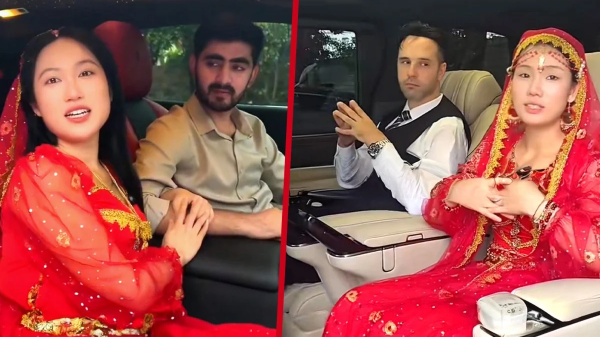
With two simple tricks of the light, a hidden animal world comes alive at night in the Bay Area.
Holding a flashlight at eye level lets people see the reflection bouncing back from different species’ eyes. The color of the gleam can help identify the creature. And an ultraviolet-light flashlight — easy to find online and at less than $15, relatively inexpensive — causes certain animals, notably the creature famous for its pincers and sting-tipped tail, to glow in the dark.
“I always think of it like a great party trick for the Bay Area,” says California Academy of Sciences curator of arachnology Lauren Esposito. “There are scorpions everywhere, with the exception of San Francisco.”
When the beam of a UV flashlight hits a scorpion, the light particles bounce back in wavelengths that make the animal fluorescent. The perceived hue can vary a bit depending on a scorpion’s color, but they’re usually greenish, “like glow-in-the-dark stars you put on a ceiling,” Esposito says.
In daytime, the Bay Area’s reclusive scorpions tend to hide under logs, in rocky crevices, under tree bark or “anywhere they can find a nice refuge,” Esposito says. The eight-legged arachnids emerge to hunt at night, favoring skies with a crescent moon, an adaptation possibly linked to avoiding predators like skunks, raccoons and bats, Esposito says.
Scorpions eat “basically anything they can come across that they can overpower, which is pretty much just insects because of their size,” she says. They also prey on spiders and other scorpions.
Three scorpion species are prevalent in the region’s natural areas, Esposito says. The chestnut-hued western forest scorpion and the tan-colored common California scorpion both approach three inches long as adults, while the sawfinger scorpion tops out around an inch-and-a-half. On Mount Diablo, all three may be encountered.
“It’s kind of a really unique spot as a result of that,” Esposito says.
Forest scorpions prefer stands of oaks or redwoods, while the common scorpions often live in “forest-to-grass transition zones,” and the sawfinger generally inhabits grassy areas, woodlands with sparse tree cover or even grazed land, Esposito says.
Two other species, Graemeloweus glimmei and Graemeloweus iviei, are also sometimes spotted in the Bay Area.
Finding scorpions at night can be as easy as grabbing a UV flashlight in a wavelength of 385 to 405 nanometers, taking it out into virtually “anywhere where there’s nature and open space,” and pointing the light at plants at waist level and below, Esposito suggests.
“People are really excited to see a scorpion,” she says. (Those planning scorpion safaris should ensure the location is open after dark.)
Keep your hands to yourself, though. Bay Area scorpions may sting if provoked, producing a reaction like a mild bee sting, Esposito says. “They don’t jump. They’re not going to chase you.”
Non-UV light sources can reveal other animals. Positioning a flashlight or headlamp near eye level and scanning around will often turn up glowing dots in the darkness, as light reflects off certain animals’ eyes and straight back into ours.
That’s thanks to a mirrorlike structure at the back of many nocturnal creatures’ eyes called a tapetum lucidum that helps them see when light is low, says Oakland Zoo docent Tom Bennett. The color of “eyeshine” varies not only by species but by specific animal. Even within species, the reflective structures are never identical. What kind of animal is behind the eyes shining in the darkness cannot be confirmed by the color of their shine alone, but certain critters are associated with certain colors.
Raccoons’ eyes, for example, usually reflect bright yellow or amber, while opossums’ tend to reflect white or pale yellow, Bennett says. Coyotes’ eyes typically look greenish-gold, and bobcats’ are yellowish, similar to raccoons. Mountain lion eyes, Bennett says, tend to shine a bright greenish-yellow.
And the most fantastical of all are spiders’ eyes, which reflect in whitish-blue. When the creatures are plentiful, says arachnologist Esposito, their multitudinous eyeshine looks like “twinkling stars in the grass.”

















































